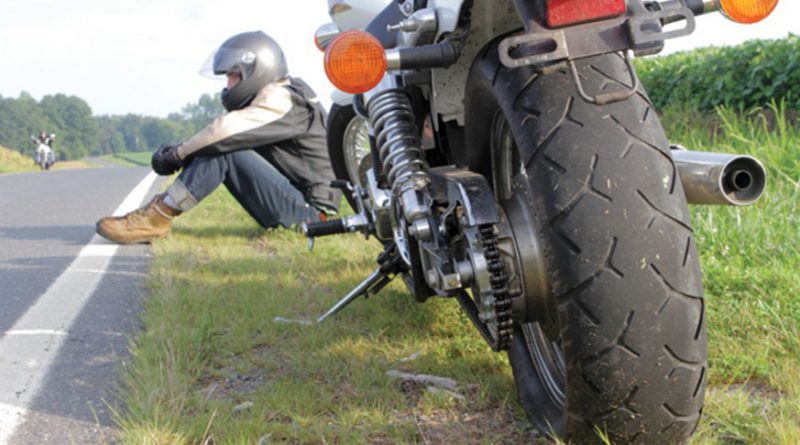Big Motorbike Maintenance Tips Every Rider Should Know
Table of Contents
ToggleOwning a large motorbike is a thrilling experience, offering freedom and adventure on the open road. However, with that freedom comes responsibility. Regular automotive maintenance is crucial to ensure your bike remains in top condition and performs optimally. By following Big Motorbike Maintenance Tips, you not only enhance your safety but also prolong the life of your motorcycle. Here’s a detailed guide on the key areas every rider should focus on.
1. Check and Change Engine Oil Regularly
The engine is the heart of your motorbike, and its oil is like blood. Keeping the oil in good condition is critical to maintaining engine performance. Motorbike engine oil lubricates the internal components, reducing friction and preventing excessive wear. Neglecting this aspect can lead to overheating and, eventually, costly repairs.
It’s essential to check your oil levels frequently. Most modern bikes have dipsticks or sight glasses for this purpose. Follow the manufacturer’s recommendations on how often to change the oil, typically every 3,000 to 5,000 miles, depending on your riding style and the conditions.
2. Inspect Tires for Wear and Pressure
Tires are your bike’s contact point with the road, and they deserve meticulous attention. Regularly inspect your tires for wear and tear, ensuring there are no bald spots, cuts, or embedded objects. Proper tire pressure is just as important, as under-inflated or over-inflated tires can negatively affect your bike’s handling and fuel efficiency.
Checking tire pressure should be a routine part of your pre-ride inspection. Always use a reliable pressure gauge, and adhere to the manufacturer’s specified pressure levels for both front and rear tires. If you notice uneven wear, it might be time for a tire alignment or replacement.
3. Maintain the Chain and Sprockets
A properly maintained chain is crucial for the smooth operation of any large motorbike. Chains that are too loose can slip, while overtightened ones can cause premature wear. It’s advisable to check your chain’s tension frequently and adjust it according to the owner’s manual specifications. Regular lubrication is also key to preventing rust and excessive wear on both the chain and sprockets.
Ensure that you clean your chain periodically with a proper cleaner to remove dirt and grime that can affect performance. A clean and lubricated chain not only ensures smoother rides but also extends the lifespan of the sprockets.
4. Brake System Maintenance
Your braking system is one of the most vital components of your motorbike. Both disc and drum brakes require regular checks to ensure they function properly. Brake pads should be inspected for wear, and they should be replaced when they’re close to their limit. Additionally, ensure that the brake fluid is at the right level and is free from contaminants.
Brake fluid should be changed at least once a year because it can absorb moisture, which reduces its effectiveness. Keeping an eye on the calipers and ensuring they are free of debris can also help prevent long-term damage.
5. Battery Care
A motorbike’s battery is often overlooked, but it plays a crucial role in your bike’s reliability. Whether you’re dealing with a lead-acid or a more modern lithium-ion battery, regular checks are essential. Inspect the terminals for corrosion, and clean them if necessary. If you have a lead-acid battery, ensure the electrolyte levels are adequate.
For motorbikes not in frequent use, consider investing in a trickle charger to maintain the battery’s charge. Batteries that are allowed to discharge completely can suffer long-term damage, reducing their lifespan.
6. Suspension and Forks Maintenance
Suspension plays a pivotal role in both comfort and handling. If your bike’s ride becomes bumpy or unstable, it may be a sign that your suspension needs attention. Regularly check the front forks for leaks or damage, and ensure the rear suspension system is performing as it should.
Suspension maintenance involves more than just checking the springs; it also requires periodic fluid changes in the front forks to ensure smooth operation. Worn suspension components can drastically affect your motorbike’s performance, so do not overlook this critical area.
7. Lights and Indicators
Functional lights and indicators are essential for safe riding, especially at night or in adverse weather conditions. Periodically inspect your headlight, taillight, brake light, and turn signals to ensure they are functioning properly. Dim or flickering lights might indicate a failing bulb or an electrical issue, which should be addressed promptly.
For added visibility, consider upgrading to LED lights if your bike doesn’t already have them. LED lights are more energy-efficient and often brighter than traditional bulbs, providing better visibility for both you and other road users.
Routine maintenance is not just about keeping your motorbike in pristine condition—it’s about safety and ensuring that every ride is as smooth and enjoyable as possible. By attending to your engine, tires, chain, brakes, and other essential components, you can significantly extend the life of your bike and reduce the risk of unexpected breakdowns.
Always follow the manufacturer’s guidelines for servicing, and consider scheduling professional checks if you’re unsure about any aspect of maintenance. With proper care, your motorbike will continue to offer exhilarating rides for years to come.


